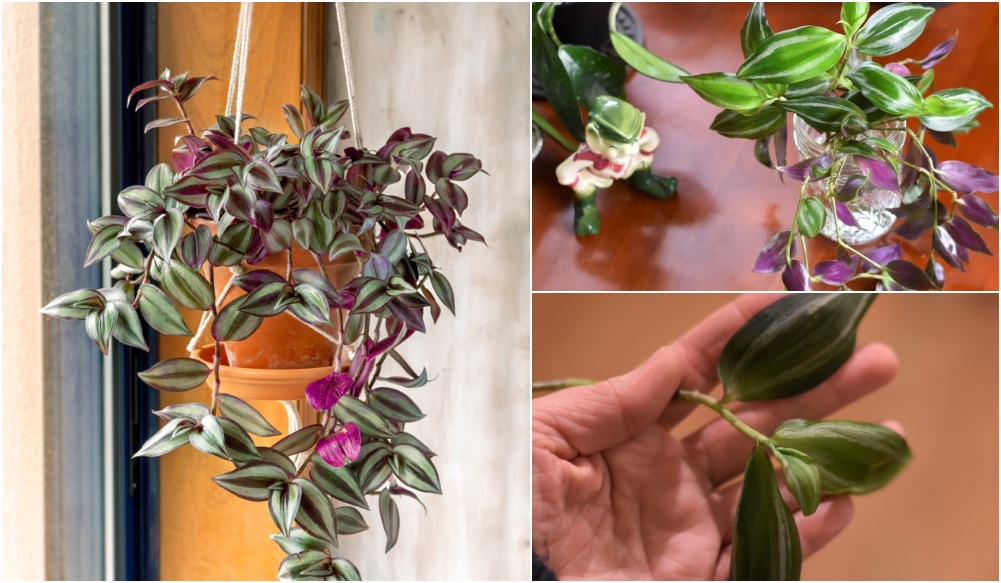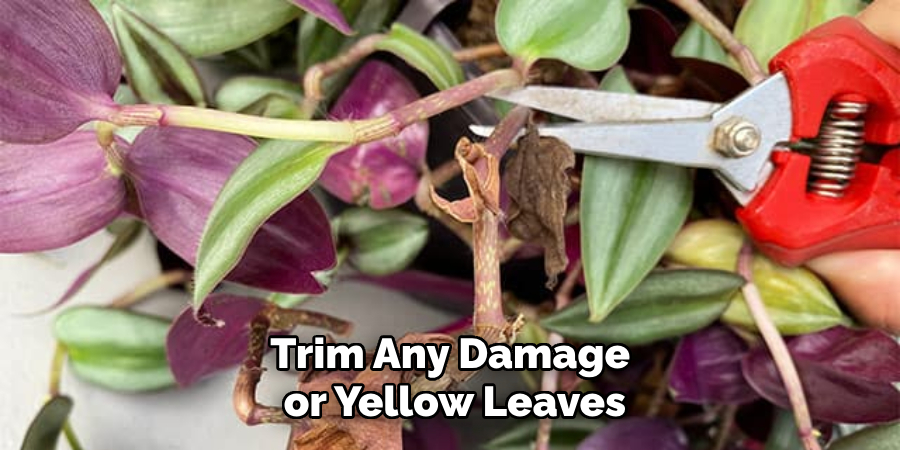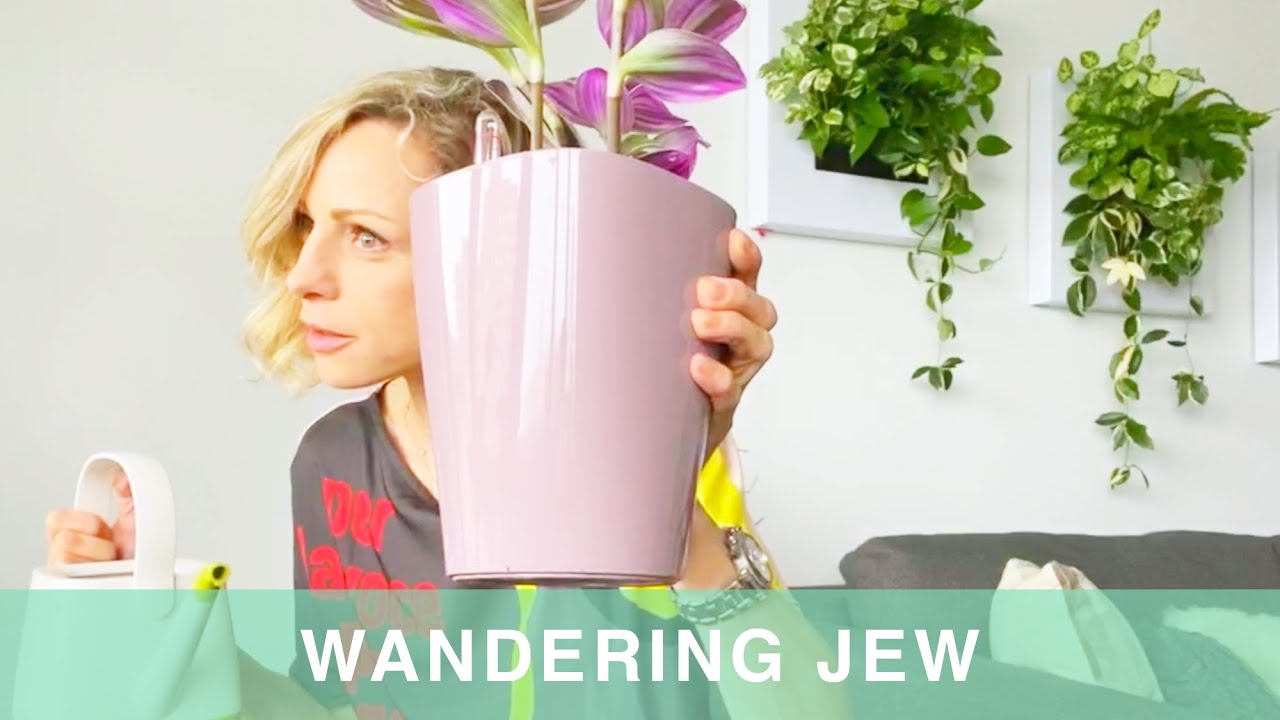To repot a wandering jew, carefully remove the plant from its current pot and gently separate the root ball to promote growth. Then, place the plant in a larger pot with fresh soil, ensuring that it is at the same depth as before.

Credit: www.ruralsprout.com
How to Repot a Wandering Jew: Step by Step Guide
Choosing The Right Pot
Choosing the right pot for repotting your wandering jew plant involves considering several factors. First, you need to determine the optimal pot size. The pot should be large enough to accommodate the roots without being excessively big. This will ensure proper growth and prevent overwatering.
Additionally, consider the materials of the pots available. Clay pots provide good drainage and prevent waterlogging, while plastic pots are lightweight and retain moisture better. Each material has its benefits, so choose based on your plant’s specific needs. By carefully selecting the pot size and material, you can provide a suitable environment for your wandering jew plant to thrive.
Preparing The Plant
Preparing the plant for repotting is essential to ensure its health and successful growth. One of the signs that indicate your wandering jew needs repotting is when you notice roots growing out of the drainage holes. Another sign is when the plant starts to outgrow its current pot and becomes rootbound.
To prepare the plant, carefully remove it from its current pot by gently loosening the soil around the edges. Be cautious not to damage the plant’s roots during this process. Once the plant is free, inspect the roots for any signs of disease or rot, and trim them if necessary.
Give the plant a gentle rinse to remove excess dirt and place it in a container with fresh, well-draining soil. Adequate preparation will ensure the successful repotting of your wandering jew.
Repotting Process
Repotting a wandering jew requires careful handling of its delicate roots. Firstly, gently loosen the plant from its current pot and shake off any excess soil. Next, select a suitable soil mixture that is well-draining and rich in organic matter.
The ideal mixture should consist of equal parts of peat moss, perlite, and good-quality potting soil. Before transferring the plant to the new pot, ensure it is slightly larger than the previous one to allow for growth. Position the plant in the center of the new pot and fill the remaining space with the soil mixture, tamping it lightly around the roots.
Water the newly potted plant thoroughly, allowing any excess water to drain away. Place the plant in a bright, indirect light location and avoid overwatering during the first few weeks to prevent root rot. Following these steps will ensure successful repotting of your wandering jew.
Watering And Care After Repotting
Repotting a wandering jew requires proper watering and care to ensure its healthy growth. After repotting, it is crucial to follow watering guidelines for the plant. Water the newly repotted wandering jew until the soil is evenly moist but not saturated.
Avoid overwatering as it can lead to root rot. Allow the top few inches of soil to dry out before watering again. Best practices for caring for the plant post-repotting include placing it in a well-lit area with indirect sunlight and avoiding extremes in temperature.
Additionally, avoid fertilizing the plant immediately after repotting to give it time to adjust. Common mistakes to avoid include underwatering or overwatering the plant and placing it in direct sunlight. By following these guidelines, you can ensure the successful repotting and care of your wandering jew.
Troubleshooting
Signs of stress in a wandering jew after repotting can be easily detected. Yellowing leaves or drooping stems are common indicators of a struggling plant. If you notice the soil staying excessively wet, root rot might be an issue caused by overwatering.
To remedy this, ensure proper drainage and adjust your watering schedule accordingly. Reviving a wandering jew plant can be achieved by providing adequate sunlight, warmth, and humidity. Trim any damaged or yellow leaves to encourage new growth. If the roots are affected by rot, carefully trim away the affected parts and replant the healthy sections.

Maintaining a healthy balance of water, light, and temperature is key to preventing future stress and promoting the well-being of your wandering jew plant.
Frequently Asked Questions
Repotting a wandering jew during its flowering season is not recommended as it may disrupt its blooming. The frequency of repotting depends on the growth rate and size of the plant. If your wandering jew is not outgrowing its pot, repotting may not be necessary.
However, it’s still vital to monitor the plant’s root system to ensure it has enough space to thrive. Observing signs such as root crowding, water drainage issues, or stunted growth can indicate the need for repotting. When repotting, choose a pot that is slightly larger than the current one and use a well-draining soil mixture suitable for houseplants.
Gently loosen the roots and place the plant in the new pot, covering with fresh soil. Water thoroughly and allow the plant to adjust to its new environment. As a result, repotting your wandering jew at the appropriate time will help it thrive and continue to beautify your space.
Frequently Asked Questions Of How To Repot A Wandering Jew
How Often Should You Repot Your Wandering Jew Plant?
It is recommended to repot your wandering jew plant every 1-2 years, depending on its growth. Look for signs of rootbound or overcrowded roots, such as roots growing out of the drainage holes or slow growth. Repotting will provide your plant with fresh soil and space for its roots to grow.
What Is The Best Time Of Year To Repot A Wandering Jew Plant?
The best time to repot a wandering jew plant is during spring or early summer, when it is entering its active growth period. This allows the plant to recover faster from any potential root disturbance and promotes healthy growth during the growing season.
How Do You Repot A Wandering Jew Plant?
To repot a wandering jew plant, choose a slightly larger pot with drainage holes. Gently remove the plant from its current pot, loosen the root ball, and place it in the new pot at the same depth. Fill the remaining space with fresh, well-draining potting mix, and water thoroughly.
Avoid over-packing the soil to prevent compacting the roots.
Conclusion
Repotting a wandering jew plant is a simple yet essential task that can contribute to its overall health and growth. By following the step-by-step process outlined in this blog post, you can ensure that your wandering jew thrives in its new pot.
Remember to choose a suitable pot size, prepare the pot with appropriate drainage, and use a well-draining soil mix. Take care not to damage the delicate roots during the repotting process and provide adequate water and light for the plant after repotting.
With proper care and attention, your wandering jew will continue to display its striking foliage and add a touch of beauty to any indoor or outdoor space. Happy repotting!

